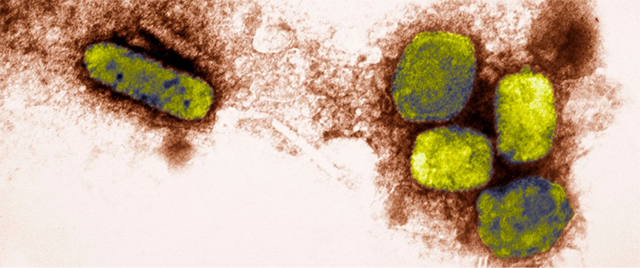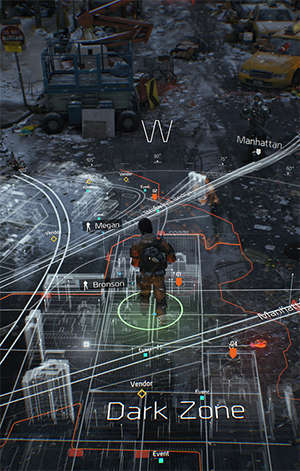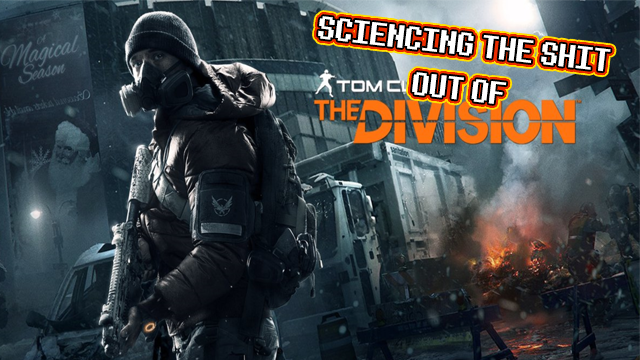I’m sure most of you have stepped in and played some of The Division by Ubisoft. If not, you’ve at least watched the trailer or gameplay videos for this third-person shooter. Most people who have played the game say that Ubisoft has redeemed itself from some of the issues in its previous games, like Assassin’s Creed Unity. But as a lover of science, I still have a problem with it.
Maybe problem is a strong word, but I do have my concerns about the virus that supposedly wiped out much of New York and sent the US government into a downward spiral. I have to question if something like that has ever happened, and if that series of events could happen again. In other words, is there a precedent that would indicate that we could have a pandemic like the one we see in The Division?
My hypothesis is that the circumstances and the disease itself make it highly unlikely to ever happen today.
I want my stance to be clear, because there are many theories out there that present a scenario where this actually could happen. But I believe there are many flaws within each of those scenarios when you relate it to the situation presented in The Division.

Let’s examine what The Division says about the pandemic.
The disease is a virus, which is a good choice because it’s harder to treat a virus. In fact, this one is based on one of the deadliest viruses on record. In The Division, it’s called Variola Chimera — a derivative of Variola Major, aka smallpox. In the game, the deadly virus was weaponized by placing it on US paper currency, supposedly allowing it to be transferred easily between multiple hosts before being detected. The disease is also three times as lethal as its derivative smallpox. The incubation rate is 7 days (versus 11 for smallpox), and the mortality rate is 90% (versus 30% for smallpox).
The Division calls the attack Dark Winter, which is an actual simulation conducted in 2001. This experiment used actual smallpox and a different distribution area. Instead of New York, the virus was distributed in shopping malls in Oklahoma City, Philadelphia, and Atlanta. Although the simulation was extremely complex, I will attempt to summarize the outcome. In the initial attack, 3,000 people were infected, but just 13 days later, 16,000 people were infected with an expected 17,000 more to emerge in the next 12 days. In less than a month, 9,900 people are expected to die from the disease, and the virus will continue to spread until it can be contained and vaccines distributed. Simply put, it would be horrible.
Pulling apart the pandemic: distribution
One-by-one, let’s look at all the pieces of The Division’s pandemic, starting at ground zero: US currency. According to a report on CNBC, 10% of Americans carry no cash at all, and in a TSYS (a US credit card processing company) report published by CreditCard.com, only 9% of Americans preferred to use cash in 2014, with an overwhelming number (78%) preferring credit or debit card transactions. Although this statistic reduces the number of first-generation cases, some people do use cash still.
The Division promotional video likes to quote a PubMed Central article about how a virus can live on money for 17 days. This is possible, but there are two problems with using that study as a basis for The Division pandemic. First, the study was based on influenza, which is a very different virus from smallpox. However, if we use that study as a basis, then we should also bear in mind that the survival rate on skin is mere minutes. And a good hand washing will decrease the likelihood of an infection exponentially.
 Pulling apart the pandemic: the disease
Pulling apart the pandemic: the disease
Let’s say everything goes well for the bio-terrorists and people decide to actually use a lot of cash that day. Could the disease itself be a part of the problem? Actually, it could. And the biggest problem is the symptoms because we know what they are. Since Chimera is based on smallpox, we can assume that it has similar symptoms, just inflated three-fold.
We can assume that an intense fever starts within 3 to 13 days, with malaise, prostration, headache, and backache. In other words, it’s a stay-at-home virus, and is only infectious when the fever starts. Of course, there is the telltale rash which will begin a day or two after the fever. And smallpox, like chicken pox, has a distinct distribution on the body, making the disease easily identifiable by medical professionals.
The incubation time and the mortality rate actually work against the virus instead of helping it spread. There is no evidence that smallpox is transferable from the dead. As morbid as it sounds, the faster people die from the disease, the faster the disease is contained.
Did I mention that smallpox is not an airborne virus? Although fluid is its vector, it does make it harder to spread. You would have a breathe in someone else’s sneeze or exchange fluid in some way for it to spread. Not saying that it couldn’t happen, it just lessens the chance.
Pulling apart the pandemic: historical evidence
I know that smallpox was one of the deadliest diseases in all of human history. However, when it wiped out half of Europe in the 18th century, we didn’t have the technology and science that we have today.
Remember the recent Ebola scare? It was terrible in some African nations. But when it hit the United States, less than a handful of people got sick, and no one died. We know how to treat symptoms so that the survival rate of deadly diseases is increased. We have cleaner medical facilities; diseases are less likely to spread. And we have better educated doctors, nurses, and other medical professionals.
The most recent smallpox outbreak happened in New York City of all appropriate places. And this 1947 event should give us a good indication of how much better we are at handling the disease than when it killed so many people centuries before. Despite the initial misdiagnosis, the disease was contained a month and a half after its first victim. Only 12 people were infected and only 2 died.

In conclusion!
My verdict is that there is little chance that Variola Chimera would run its course the way it’s depicted in The Division. I cannot rule out that it will never happen, but it would have to be a very specific set of circumstances. Players of the game Plague, Inc. will know that one of the best strategies for wiping out the world with a disease is to give it minor symptoms and start in a country with poorer medical facilities.
What are your thoughts? We are sciencing the shit out of this, right? Well, science works by best by being proven wrong. So let me know what I missed, and add your thoughts, too.
I really appreciate the civil discussion in the comments, like the one from last week. Mathenaut presented an easier way for the time-displacement of Quantum Break to work:
“If you could somehow decouple gravity from mass (which I guess isn’t impossible in principle), then you wouldn’t need black holes for anything. You can just pop your superman gravity gun and watch time go screwy at whatever you shoot at… which is pretty much the game.”
Thanks for the input. I’d like to read more discussion like this in the comments. And what should be some of the future topics for this column? Let me know so that I can science the shit out of them, too.








Published: Apr 13, 2016 08:13 am